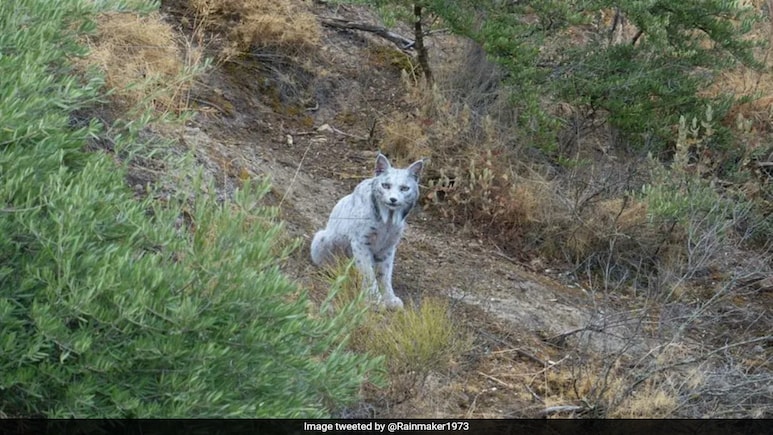
- A white Iberian lynx with leucism was spotted in Jaén, southern Spain
- The lynx exhibits partial pigment loss but retains normal eye color
- Conservation efforts raised Iberian lynx numbers from under 100 to 2,000
A white Iberian lynx, believed to be the first of its kind ever documented, has been spotted in the mountains of Jaén in southern Spain. The sighting of the rare, leucistic wildcat is being celebrated as a landmark success for the conservation of the Iberian lynx, a species once on the verge of extinction. A video captured by Spanish wildlife photographer Angel Hidalgo shows a lynx with an unusually pale, cream-coloured coat, while retaining the typical features of its species -- sharp eyes, dark ear tufts, and the signature facial ruff.
"I've been setting up cameras for years, with many failed attempts and long hours of work. But this time, nature gave me something truly unique, Hidalgo said.
Experts who examined the footage confirmed the lynx has leucism, a rare genetic condition that leads to partial pigment loss. Unlike albinism, which causes a total absence of color and often impacts vision, leucism allows for normal eye pigmentation and overall healthy development. The sighting has drawn significant interest from conservationists and nature enthusiasts.
To protect the animal, authorities have kept the exact location of the sighting under wraps, especially as the lynx's unique appearance has already gone viral online.
A photographer in Spain has documented the nation's first white Iberian lynx, a rare stunning leucistic specimen. pic.twitter.com/J2OupqKeMk
— Open Source Intel (@Osint613) October 29, 2025
Conservation Done Right
Conservation efforts have played a significant role in the lynx's survival. In 2002, there were fewer than 100 Iberian lynxes left, due to poaching and habitat loss. Thanks to intensive conservation efforts by the Spanish government, NGOs, and European Union-funded Life Projects, the species has made a remarkable comeback. By 2015, the global count of adult lynxes had risen to 404, and by 2025, the population grew to approximately 2,000 individuals.
However, conservationists warn that the white lynx's light fur offers poor camouflage in the wild, making survival more challenging. Despite this, the discovery is seen as a testament to the success of conservation efforts and the resilience of nature.
The sighting was met with admiration online, with many calling it a powerful symbol of resilience and a compelling reminder of the importance of wildlife conservation. Social media users were captivated by the rare lynx, praising its beauty and the success of ongoing preservation efforts. One user wrote, "Absolutely breathtaking. Nature keeps reminding us how much beauty still exists when we care enough to protect it."
Another commented, "Beautiful! I hope it's protected," while a third added, "What a stunning testament to conservation done right – Spain's Iberian lynx clawing back from the brink of oblivion, and now gifting us this ghostly leucistic marvel prowling the Andalusian wilds."
Track Latest News Live on NDTV.com and get news updates from India and around the world

